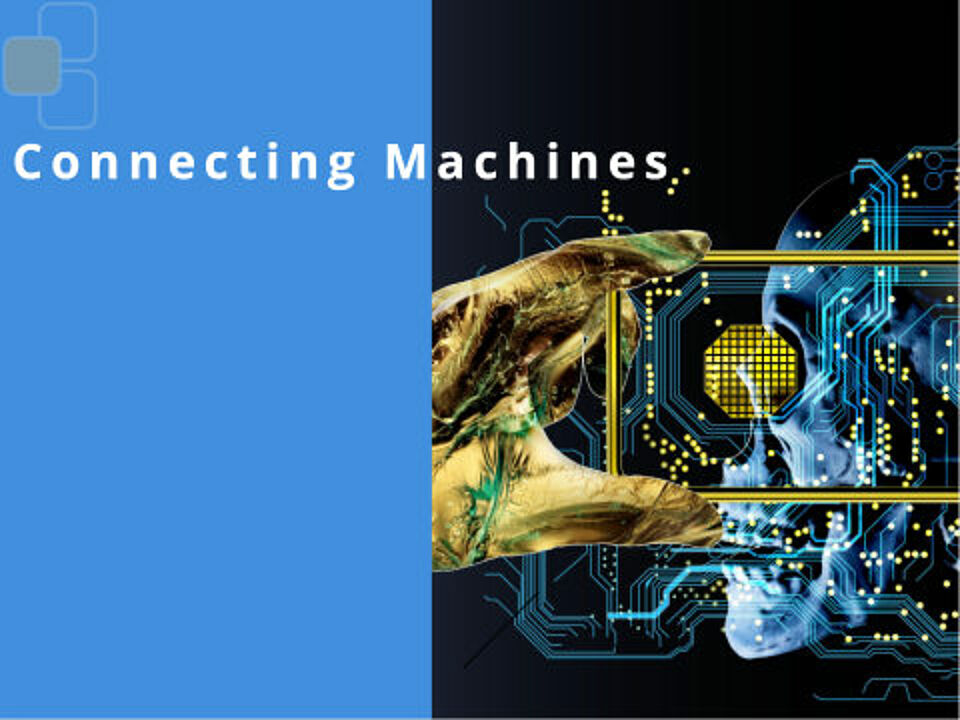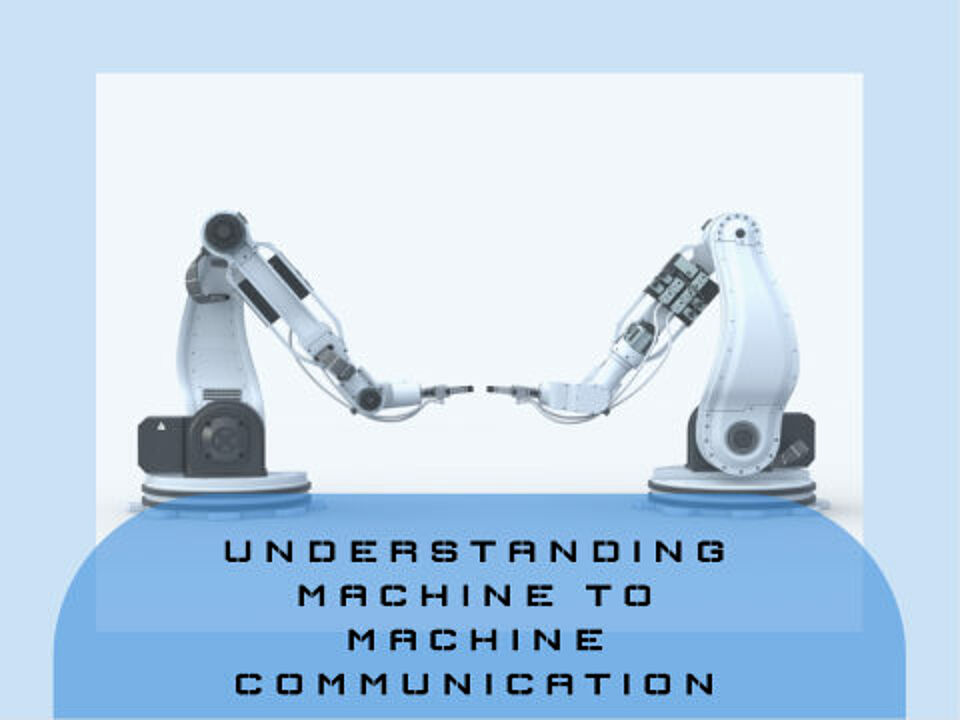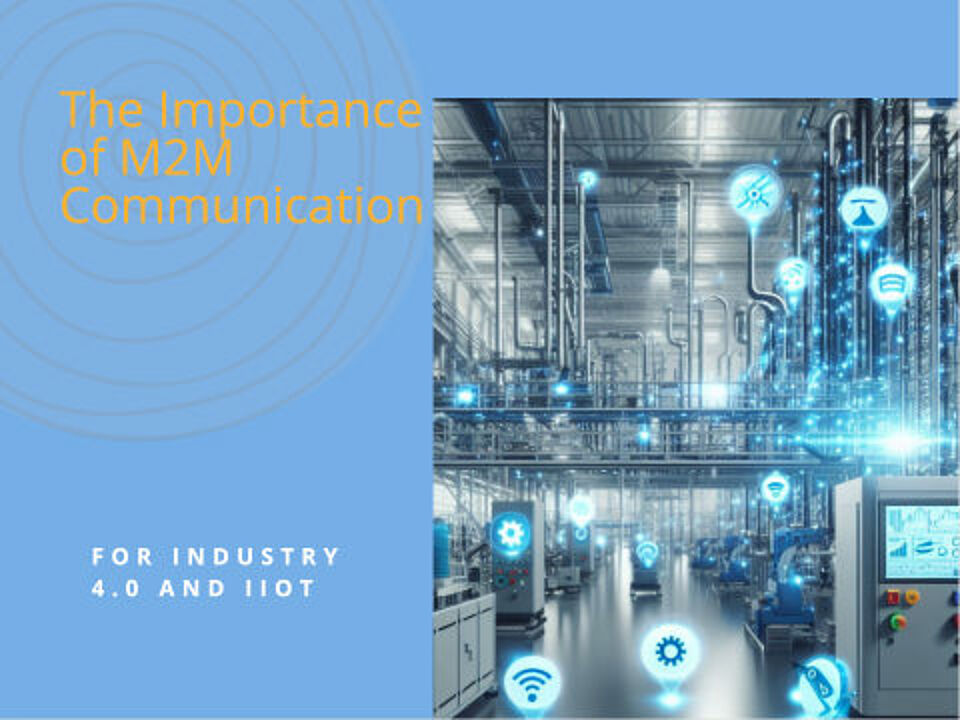
M2M - Briefly summarised
M2M, also known as machine-to-machine communication, refers to the automated exchange of information between end devices such as machines, vehicles or containers. This communication enables devices to interact with each other and exchange data without manual intervention. This leads to completely new possibilities and use cases, e.g. in industry, logistics, agriculture, healthcare and other areas, in order to improve efficiency, productivity and safety. Examples of M2M applications include machine monitoring, vehicle location tracking, inventory monitoring and remote control of devices.
In summary, M2M communication offers numerous benefits for companies and organisations that want to optimise their processes and develop their business. By integrating M2M technologies, companies can implement innovative solutions to increase their efficiency and gain a competitive edge.
What does M2M mean?
Definition of M2M: M2M stands for machine-to-machine and describes direct communication between devices without human interaction. This technology enables machines to communicate with each other and exchange information.
How does M2M communication work? In M2M communication, data is collected from one device, transmitted and received by another device. Thanks to M2M technology, these processes can take place wirelessly via the mobile phone network or another internet connection.
Example of an M2M application: One example of an M2M application is telemetry in vehicles. Sensors in the vehicle automatically transmit data such as speed, temperature and fuel consumption to a central system for analysis and control.

Why is M2M important in the IoT?
Definition of M2M: M2M stands for machine-to-machine and describes direct communication between devices without human interaction. This technology enables machines to communicate with each other and exchange information.
How does M2M communication work? In M2M communication, data is collected from one device, transmitted and received by another device. Thanks to M2M technology, these processes can take place wirelessly via the mobile phone network or another internet connection.
Example of an M2M application: One example of an M2M application is telemetry in vehicles. Sensors in the vehicle automatically transmit data such as speed, temperature and fuel consumption to a central system for analysis and control.
Why is M2M important in IoT?
Role of M2M in IoT projects: M2M plays a central role in the Internet of Things (IoT) as it enables the networking and communication of devices. The integration of M2M enables intelligent business processes and workflows to be realised.
Connection between M2M and Industry 4.0: M2M is closely linked to Industry 4.0 as it drives the automation of processes and increases efficiency in the manufacturing industry.
Advantages of machine-to-machine communication for companies: Companies benefit from M2M solutions through improved monitoring, control and analysis of data in real time, resulting in more efficient operations.
What advantages do M2M solutions offer?
Increased efficiency through M2M technology: M2M solutions help to increase efficiency by enabling the automated exchange of information between devices, resulting in faster and more accurate decisions.
M2M SIM cards and their function: M2M SIM cards are specially designed for data transmission in M2M applications - in harsh environments - and enable wireless communication between machines via the mobile phone network.
Application areas of M2M solutions in logistics: In the logistics industry, M2M solutions are used for tracking the location of containers, inventory management and route optimisation in order to optimise logistics processes.
How is M2M communication used in automation?
Integration of M2M systems in automated processes: M2M systems are an integral part of automated processes in the manufacturing and automotive industries, as they enable communication between machines and systems.
Example of remote monitoring using M2M: M2M enables companies to monitor systems and machines remotely in order to record conditions in real time and intervene in good time if necessary to prevent breakdowns.
The role of sensors in M2M communication: Sensors are crucial for data acquisition and transmission in M2M communication, as they measure physical parameters such as temperature, pressure or position and pass this information on.

Why is M2M communication important for Industry 4.0 and IIoT?
M2M solutions for the automation of workflows
M2M solutions are crucial for the automation of workflows in Industry 4.0 and the Industrial Internet of Things (IIoT), as they enable companies to organise their processes more efficiently and increase their productivity.
Further elaborated: The integration of M2M into the automation of workflows facilitates communication between machines and enables seamless control of processes such as material feeding and the further processing of finished parts in downstream processes. This can be quality assurance or removal.
In more detail: M2M solutions help to increase the efficiency of production processes and improve the quality of manufactured products, resulting in greater competitiveness. Automated data collection and analysis allows companies to gain real-time insights into their processes and react quickly to changes.
In addition, M2M solutions enable predictive maintenance, where machine maintenance is planned and carried out based on data and analyses in order to minimise unplanned downtimes and extend the service life of the machines.
By using M2M solutions, companies can also cut costs by working more efficiently, reducing material waste and optimising the use of resources.
Increasing efficiency through M2M applications
Increasing efficiency through M2M applications makes it possible to use machine-to-machine communication to automatically manage and optimise processes. Through the use of mobile communications technology, M2M is becoming increasingly versatile and enables business models to be optimised. With remote access, systems, machines and buildings can be monitored and controlled from a central location.
Data can be adequately exchanged through communication between individual machines. Depending on the use case and requirements, an IoT project can thus connect from one data integration point to another data end point or data processing centre.
Integration of M2M technology in control centres
In control centres, M2M integration reduces the human workload and speeds up response times for critical, automated processes. This is particularly important in environments where quick decisions need to be made, such as in production, logistics or energy supply.
By integrating M2M technology into control centres, companies can also optimise their maintenance and servicing processes by being able to react to potential problems and failures at an early stage. This leads to a reduction in downtimes, an extension of the service life of systems and a reduction in maintenance costs.
Overall, M2M communication is a crucial building block for the realisation of Industry 4.0 and IIoT concepts, as it enables companies to optimise their operations, increase their competitiveness and open up new business opportunities.
How can EcholoN support M2M?
EcholoN, as a versatile service management software, provides a comprehensive ecosystem to support M2M communication, a key aspect of modern Industry 4.0. Through its advanced features, e.g. via the Data Workflow System and Worflow Engine, EcholoN enables seamless exchange of information and data between machines and systems, allowing for more efficient monitoring, control and maintenance of machines.
By integrating EcholoN into M2M scenarios, companies can benefit from improved data analysis, which in turn leads to optimised operations, reduced downtime and increased productivity. EcholoN promotes the automation of complex processes and facilitates preventive maintenance by providing critical system alerts and performance data in real time. This allows organisations to proactively respond to potential problems before they lead to serious downtime.
In an age where machine reliability and efficiency are critical to business success, EcholoN is a key solution that bridges the gap between physical assets and digital intelligence.
Perhaps also interesting:
